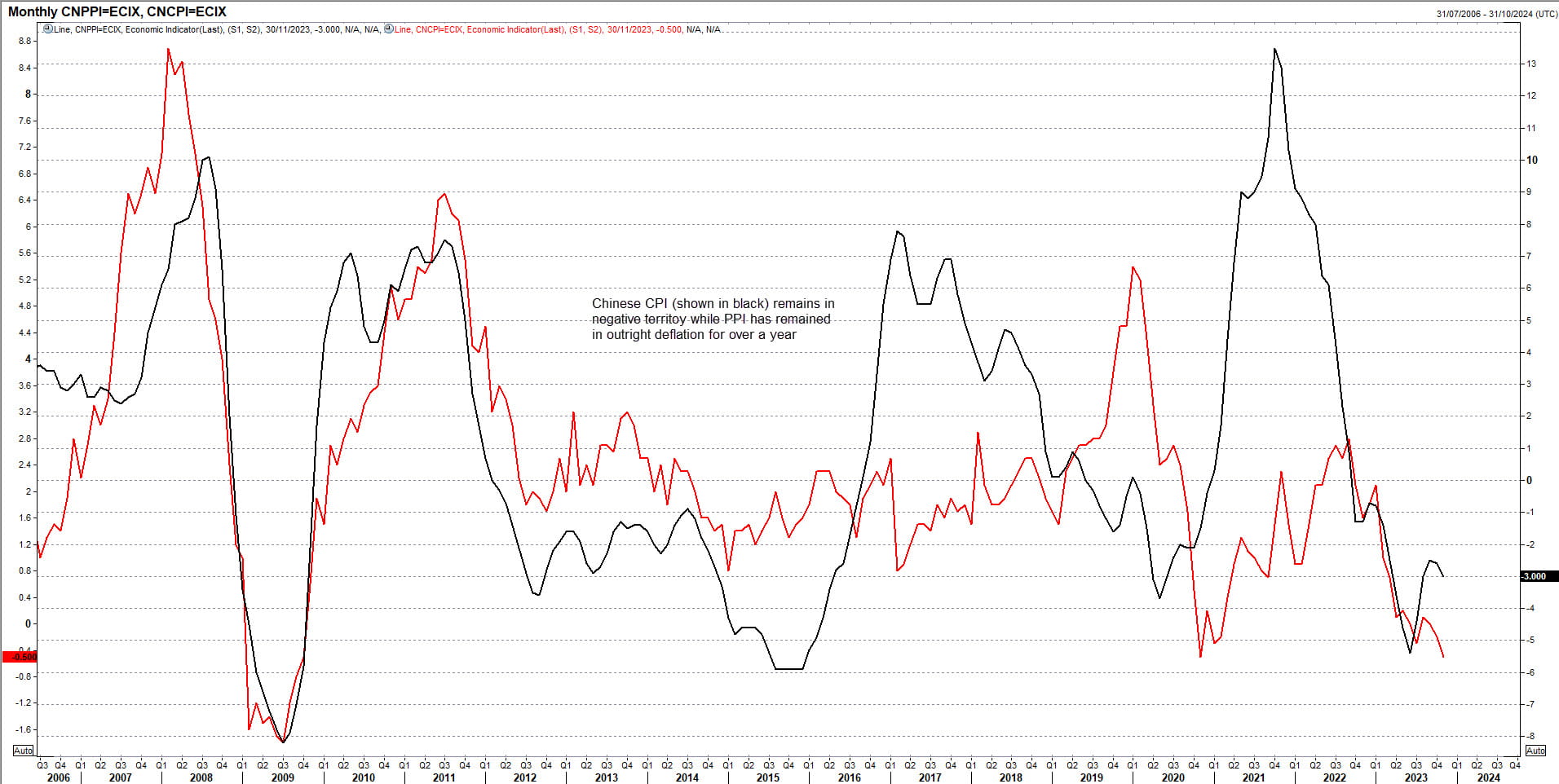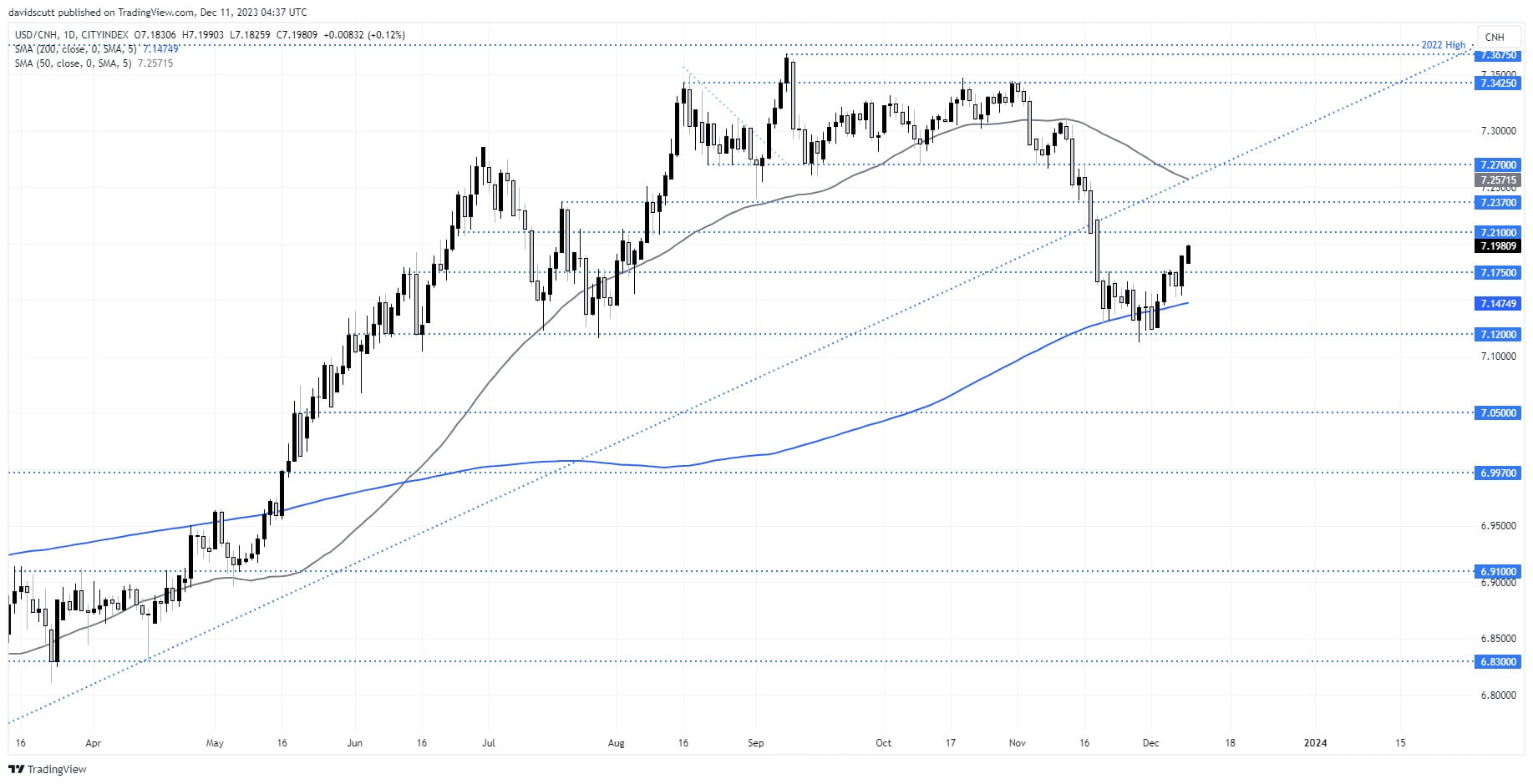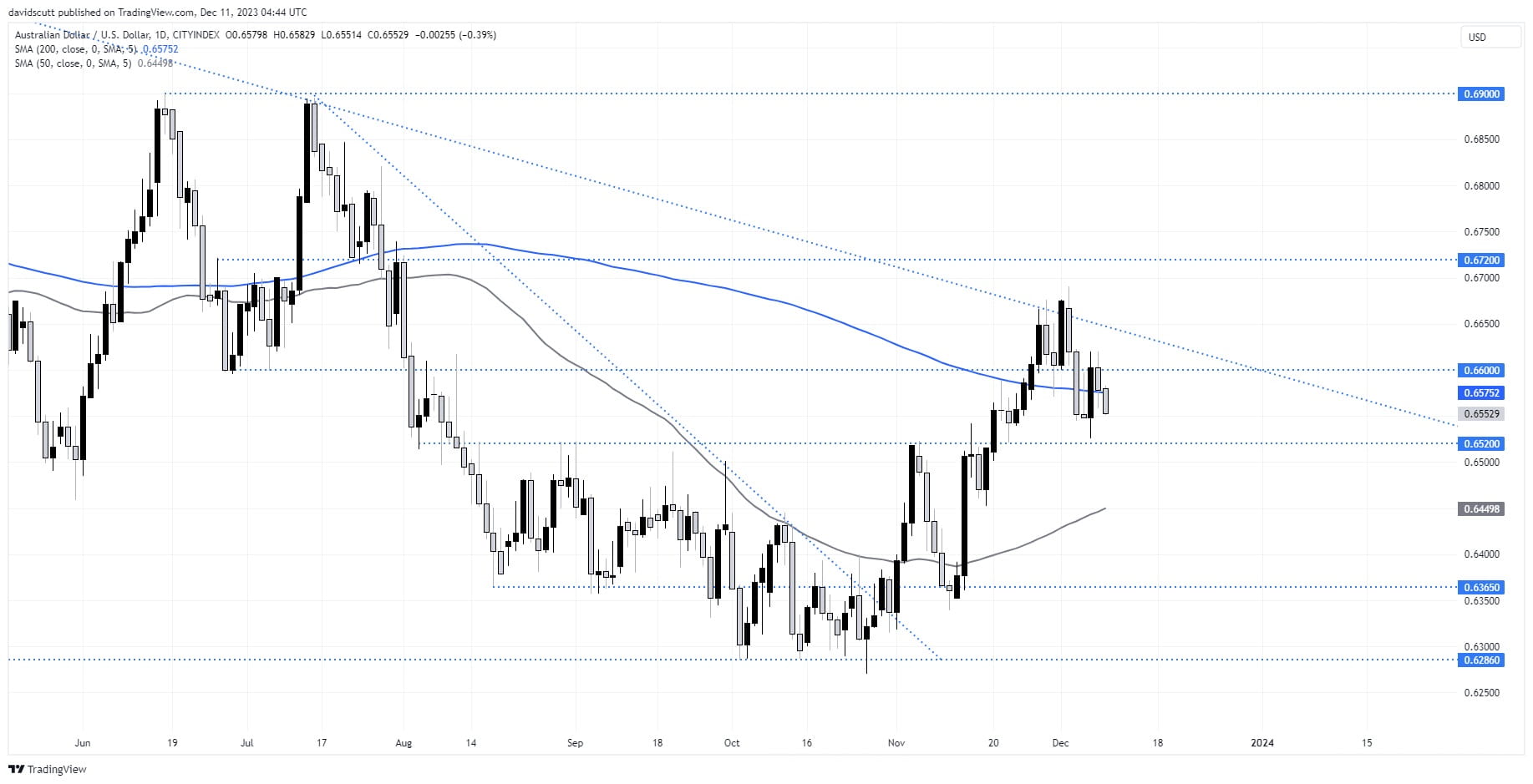
- AUD, JPY and CNH are trading lower against the USD on Monday
- China’s November inflation report points to an economy operating well below potential
- Bias for USD and US yields this week appears higher unless core US CPI undershoots
It’s hard to get excited about the prospects for Asian currencies when you see Chinese inflation data as weak as that released on Saturday, signifying that despite an increasingly lengthy list of measures to support activity, the world’s second-largest economy is operating well below potential. Until that turns around meaningfully, and with no sign of a significant stimulus response from policymakers, it does not bode well for the prospects for the Chinese yuan nor the Australian dollar.
China’s inflation numbers were bad on multiple levels
Even by recent standards, the inflation numbers dished up by China were alarmingly weak, not only painting a poor picture on the health of the domestic economy but also increasing the risk of disinflationary forces around the world turning into an outright deflationary threat in some nations and regions next year.
China’s National Bureau of Statistics said CPI declined 0.5% in November against expectations for a decrease of 0.1%, leaving the annual rate down 0.5% from a year earlier. That was the fastest decline since the lockdown era some three years ago. Even excluding food and energy, core inflation rose just 0.6% over the year, five times slower than the loose level targeted by the People’s Bank of China.
Further upstream, price pressures at the factory gate were equally soft, suggesting we may see similar patterns at the consumer level in advanced economies given the linkages to trade prices. Producer prices slumped 3% from 12 months earlier, the largest decline since August and four tenths below the rate expected.

Source: Refinitiv
Sluggish Chinese growth may become the norm
Combined with PMIs tracking activity levels across China’s manufacturing and non-manufacturing sectors in November, the weakness underscores just how disappointing China’s growth performance has been this year. Inflation is not just weak due to base effects but because economic conditions are extremely sluggish. And with no sign of policymakers budging on the pledge not to roll out flood-like stimulus measures as seen in slowdown episodes of the past, it may remain that way for a considerable period as the economy attempts to adjust from the property-led growth model used until the start of this decade.
And that’s pressuring Asian FX names
When you look at the economic performance relative to expectations, along with the resilience shown from the US economy over the same period, it comes as little surprise Asian FX pairs have been struggling in 2023. Along with the JPY, USD/CNH has set the tone, often acting as a lead indicator for movements elsewhere in the region.
USD/CNH has upside momentum
After slugging it out for control at the 200-day moving average in late November and early December, USD/CNH bulls have regained the ascendency recently, seeing the pair take out resistance at 7.1750 on Friday as US unemployment tumbled unexpectedly to 3.7% last month, raising questions over the merit of more than 100 basis points of cuts priced into the US curve next year. Then came the weak Chinese inflation report, into a week where the risks for the USD and US bond yields appear skewed to the upside in the absence of a cool US core inflation report on Tuesday.
As such, the path of least resistance for USD/CNH looks higher in the near-term, bringing a potential push towards 7.2100 into play. Above that, 7.2370 and the intersection of former uptrend support and 50-day moving average at 7.2570 into play. Below, 7.1750 and 200-day moving average are the first support levels of note.

AUD/USD breaks 200DMA again
With USD/CNH backing away from the 200-day moving average, it should come as no surprise the G10 China proxy – AUD/USD – looks like it may well do the same. Having failed again to break and hold above downtrend resistance dating back to early 2022 two weeks ago, the pair has struggled to attract buyers above .6600 in recent sessions, hit by what was perceived to be a less-hawkish RBA monetary policy statement for December and last Friday’s decent US labour market report.
In line with weakness seen in the CNH and JPY on Monday, AUD/USD has pushed back below its 200DMA. While it has done a little bit of work around .6650, the first level of major support is not located until .6520. A break there would see the pair move back into the sideways range it was stuck in for large chunks of the year and open the door for potential retest of the lows hit in October. On the topside, sellers between .6600 and .6645 will likely cap bounces in the near-term.

-- Written by David Scutt
Follow David on Twitter @scutty
How to trade with City Index
You can trade with City Index by following these four easy steps:
-
Open an account, or log in if you’re already a customer
• Open an account in the UK
• Open an account in Australia
• Open an account in Singapore
- Search for the market you want to trade in our award-winning platform
- Choose your position and size, and your stop and limit levels
- Place the trade




